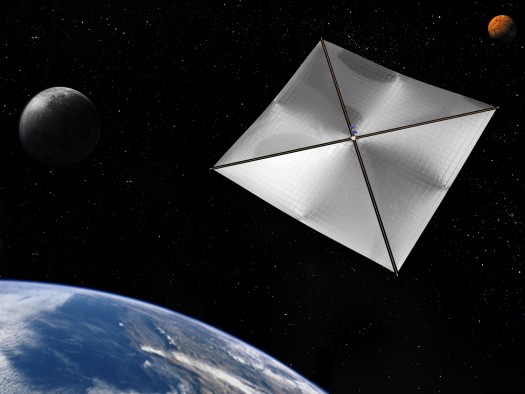Who Wants to be a Daredevil?
May 2006By By Patrick L. Barry and Dr. Tony Phillips
By Patrick L. Barry and Dr. Tony Phillips;>> Macro menumgr_macro_spaceplaceimage not found <<
But “new” also means unproven and risky, and that could be a problem. Remember HAL in the movie “2001: A Space Odyssey”? The rebellious computer clearly needed some pre-flight testing. Testing advanced technologies in space is the mission of the New Millennium Program (NMP), created by NASA’s Science Mission Directorate in 1995 and run by JPL. Like the daredevil test pilots of the 1950s who would fly the latest jet technology, NMP flies new technologies in space to see if they're ready for prime time. That way, future missions can use the technologies with much less risk.
Example: In 1999, the program’s Deep Space 1 probe tested a system called “AutoNav,” short for Autonomous Navigation. AutoNav used artificial intelligence to steer the spacecraft without human intervention. It worked so well that elements of AutoNav were installed on a real mission, Deep Impact, which famously blasted a crater in Comet Tempel 1 on July 4, 2005. Without AutoNav, the projectile would have completely missed the comet.
Some NMP technologies “allow us to do things that we literally could not do before,” says Jack Stocky, Chief Technologist for NMP. Dozens of innovative technologies tested by NMP will lead to satellites and space probes that are smaller, lighter, more capable and even cheaper than those of today.
Another example: An NMP test mission called Space Technology 9, which is still in the planning phase, may test-fly a solar sail. Solar sails use the slight pressure of sunlight itself, instead of heavy fuels, to propel a spacecraft. Two proposed NASA missions would be possible only with dependable solar sails—L1 Diamond and Solar Polar Imager—both of which would use solar sails to fly spacecraft that would study the Sun.
“The technologies that we validate have future missions that need them,” Stocky says. “We try to target [missions] that are about 15 to 20 years out.”
A menagerie of other cool NMP technologies include ion thrusters, hyperspectral imagers, and miniaturized electronics for spacecraft navigation and control. NMP focuses on technologies that have been proven in the laboratory but must be tested in the extreme cold, vacuum, and high radiation environment of space, which can’t be fully recreated in the lab.
New NMP missions fly every year and one-half to two years, taking tomorrow’s space technology for a daredevil test drive.

Artist’s rendering of a four-quadrant solar sail propulsion system, with payload. NASA is designing and developing such concepts, a sub-scale model of which may be tested on a future NMP mission.
This article was provided by the Jet Propulsion Laboratory, California Institute of Technology, under a contract with the National Aeronautics and Space Administration.



